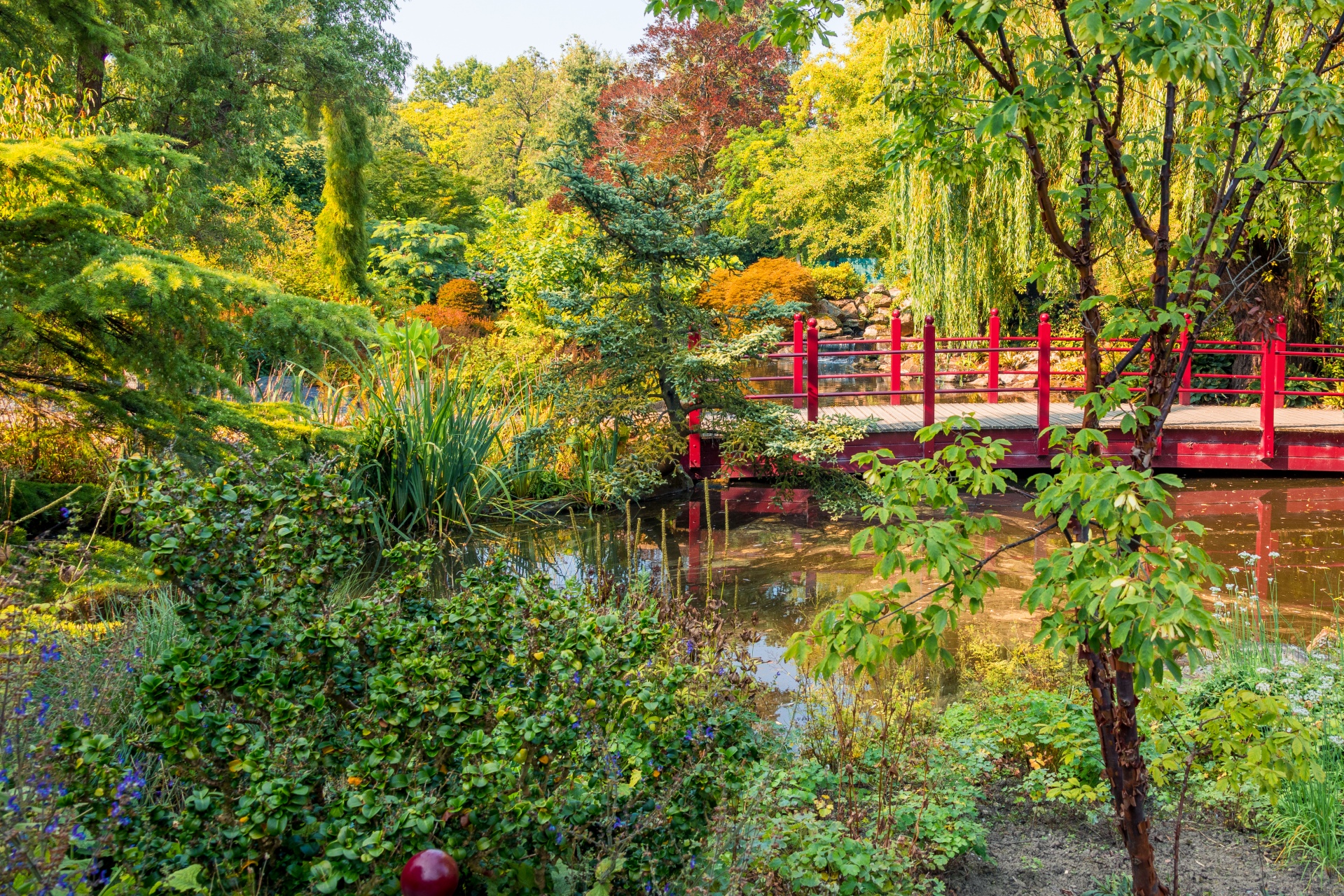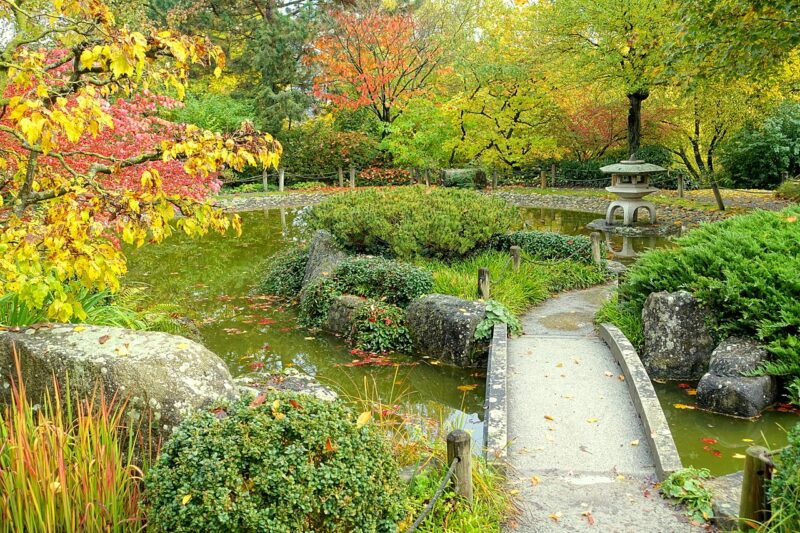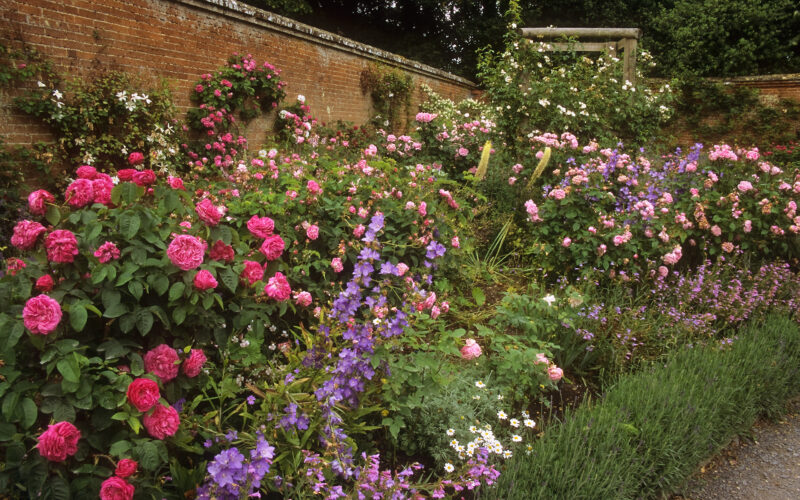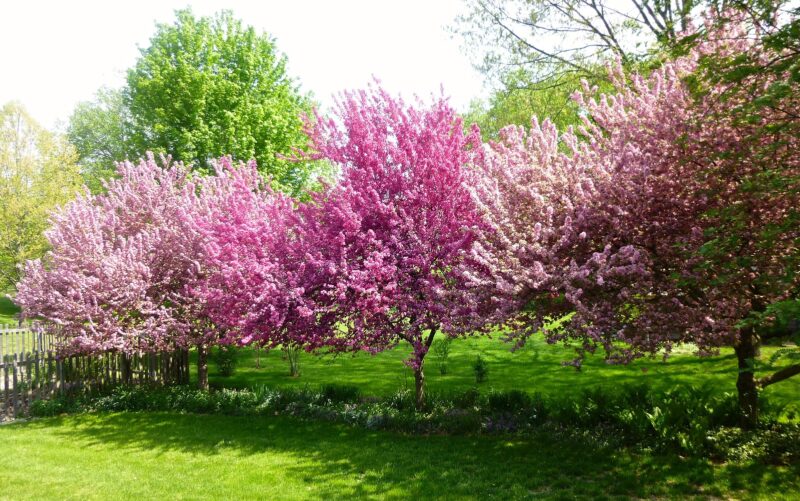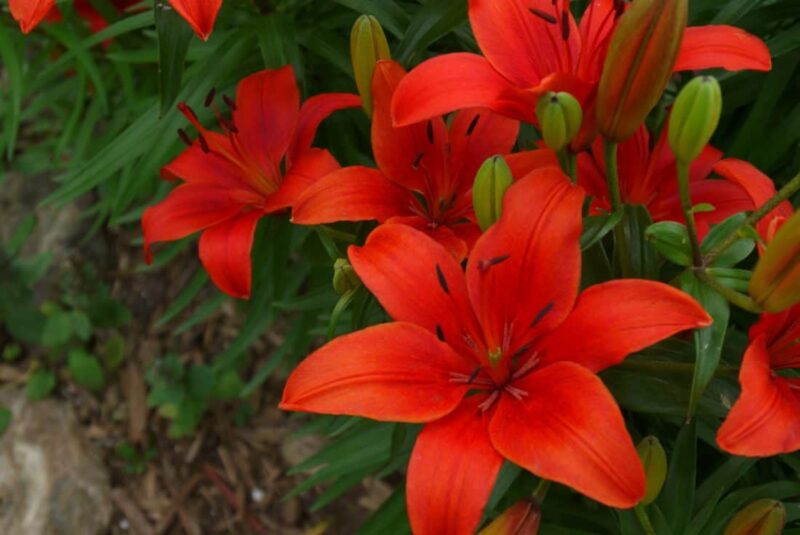Creating an Asian garden in our colder North American climates shouldn’t be a frightening task. All you have to do is remember what you are trying to accomplish in your garden space; the same sense of place that a garden in Japan also evokes.
True, not every aspect of a Japanese or Asian garden can be duplicated, nor can the scents or sounds. Instead, you can achieve your goal by looking at the palette of plants that are offered in your local garden centers and nurseries from a different perspective.
By substituting hardy alternatives, you can still capture the fundamental aspects of these gardens in a northern climate.
An Exercise in Substitution
First, start by putting some basic thoughts about your space on paper. Think about how you would like it to resemble a landscape from Japan, China, or anywhere else in Asia, recalling the feelings that you would like to replicate.
The next step would be to look at the specific plants that you are trying to duplicate, or at least what it is that you remember of them. For each individual Asian plant species you would like to bring into your Asian garden, write down on paper just what they look like and what is appealing to you about them, but do not write the name.
For example, I’ll describe an azalea plant (Rhododendron spp.) as follows:
- Tight, compact growth
- Easily trimmed
- Dark green leaves
- Blooms in spring with pink to deep rose single flowers in clusters
- Excellent backdrop for summer blooming plants
- Consistently green throughout the summer
Of course, some of us residents in the warmer areas of the North region can grow smaller Rhododendrons and deciduous azaleas, but for the most part, this is a daunting challenge for the majority of North landscapers. So we’re going to look for favorable substitutes.
Now take that information and look at the various plants available in your area which you feel confident that you can grow, by virtue of their hardiness and cultural suitability. Or, as most people seem to feel they are less capable than they really are, you can look to plants that are considered ‘easy’ to grow.
In the case of an azalea, with the exception of the bloom time, many of the hardy Parkland or Explorer shrub roses (Rosa spp.) could be described in a similar fashion. Though smaller in size, Bergenia (Bergenia cordifolia) is just as showy in the spring and can fill the color void here.
This exercise really isn’t difficult at all, once you remove the name of the plant. It simply depends on the characteristics and the growth habit of the plants and making substitutions based on these to achieve a similar appearance to that which would be found in the plants of Japan.
Trees and Shrubs to Consider as Substitutes
The picturesque Japanese maple (Acer palmatum) is one of the staples of Asian-style gardens in warmer climates. As many northerners try to incorporate one of these into their gardens, few I know have ever been successful.
I have even tried them myself, but with little success. Some of the smaller shrub varieties can be covered and maintained as dwarf accents, however, none that I know of will develop into a tree form successfully in our extremely cold climate gardens.
But there’s no reason to despair. Effective substitutions may include Amur maple (A. ginnala), Tartarian maple (A. tataricum), and Korean maple (A. pseudosieboldianum). All of these have a smaller form with smaller leaves which are lobed to some degree, similar to their much sought-after Japanese sister.
Unfortunately, unlike their counterparts, the foliage colors of these hardy varieties are only distinctive in the autumn, when they glow with red to orange brilliance. In all, they are easily fine substitutes for Japanese maples.
The other common tree in many Japanese gardens is the astonishing pink flowering cherry. Unfortunately, no true cherry tree of this nature is hardy enough to grace the colder regions of the North. Therefore, I would propose that an ornamental flowering crab (Malus spp.) is a fine alternative.
The flowering cherries may not produce fruit like the flowering crabs, but with careful control, the fruit can be removed if it is unwanted. But in the flowering crab, the visual effect of a massive tree filled with striking pink blossoms is truly at your fingertips.
Two other common plants in Japanese gardens are boxwood (Buxus spp.) and yew (Taxus spp.). Again, these can be difficult to grow in extremely cold climates, although some species do exist that can tolerate winters in zones 4 and warmer.
A good substitute would be cotoneaster (Cotoneaster spp.), but regular pruning would be necessary. Some perennials like silver mound (Artemisia spp.) and herbs such as oregano (Origanum spp.) can emulate the effect of a boxwood, although on a smaller scale. And as for the yew, arborvitae or white cedar hybrids can provide the same effect.
Contorted plants seem to be a symbol in the Japanese garden. Again, though many of the specific varieties which grow in Japan are not hardy enough here, there is no reason why a mugo pine (Pinus mugo) or bristlecone pine (P. aristata) cannot be trained to mimic these ancient gems.
Many garden centers are even carrying pre-trimmed pines including Scots pine (P. sylvestris) to resemble 100-year-old Bonsai, which can be directly incorporated into a Japanese garden.
Other Plants to Consider as Substitutes
Bamboo is a little more difficult to grow in the North, but not impossible. Unless the large stem of the bamboo is what you are trying to duplicate, many cold hardy grasses, like Miscanthus sinensis ‘Giganteous’, or Phragmites austragallis can fill the bill. Few trees have the characteristic bark of bamboo.
Still, you could consider a golden willow (Salix alba ‘Vitellina’) or gold-twig dogwood (Cornus alba ‘Gouchaultii’) to at the very least duplicate the yellowish and virtually vertical stems. Severe, annual pruning of either of these will assure a regular supply of the yellow stems.
Finally, many Asian gardens are filled with summer and fall bloomers like hydrangeas, chrysanthemums, and lilies. Varieties of these plants are easily found in our cold climate gardens and should be considered. Though hardy hydrangeas are not as abundant in variety, many exciting new varieties are being introduced to fill the voids.
As well, spider mums may not be hardy at all in the cold North, but many chrysanthemums are, including the Morden varieties and several annual mums. Another alternative is to use large flowering marigolds and dahlias to do the trick.
And finally, lilies (Lilium spp.) are so very hardy that even if you cannot locate the exact species which you are looking for, there is surely another one that has similar characteristics.
Though the practical application of an authentic Japanese garden is not likely in the North landscaping region, a virtual “knock-off” can easily be forged in a landscape with little effort. As I have always said, it is your garden and you are the one who’s going to live with it and enjoy it. If a willow feels like bamboo to you, then do it.
After all, how many people do you know who buy Avon products that smell like real designer labels? Or who wears a ‘Roledex‘ watch, not a ‘Rolex‘!
And who, other than a professional, would know the difference? These are the questions you need to ask yourself. In the end, no one is going to turn it over to read the label!
So good luck with your Asian garden – “Oiy”!
Perla Irish, who is more familiarly known as Irish, is the Content Manager at newfld.com. She loves following trends around home and garden, interior design and digital marketing. Through this blog, Irish wants to share information and help readers solve the problems they are experiencing.
